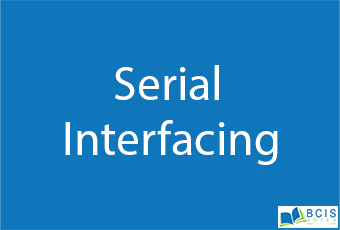
Serial Interfacing
Serial interfacing is a communication interface between two digital systems that transmits data as a series of voltage pulses down a wire. A “1” is represented by a high logical voltage and a “0” is represented by a low logical voltage. Essentially, the serial interface encodes the bits of a binary number by their “temporal” location on a wire rather than their “spatial” location within a set of wires. Encoding data bits by their “spatial” location is referred to as a parallel interface and encoding bits by their “temporal” location is referred to as a serial interface. Figure 3 graphically illustrates the difference between these two communication methods.
It is the most widely used approach to transfer information between data processing equipment and peripherals. In general, communication means interchange of information between individuals through written documents, verbal words, audio and video lessons.
Advantages of Serial Communication over Parallel Communication
There is a misconception that the serial ports/buses are slower than parallel ports/buses as the transmission of data is only a bit per unit of time. Even serial ports/buses may be clocked considerably a quicker rate than parallel ports/buses and can accomplish a higher speed of data flow. The factors which makes Serial Communication better than Parallel Communication are:
- No Clock Required
- Requires Less Space
- No Cross-talks
- Low Cost
No Clock Required
In the case of unclocked and asynchronous type Serial Communication, the problem of clock skew between the lanes/ channels does not exist.
Requires Less Space
The Serial Communication configuration requires less space because the requirement of cable is less in serial connection. The availability of this additional space gives good isolation of the data lanes from the neighboring communication components.
No Cross-talks
There is a minimal presence of conductors in the nearby space. It is, therefore, the chances of cross-talks are rare.
Low Cost
The cost of a serial link is less in comparison to parallel links.
You may also like Parallel Interfacing

Leave a Reply